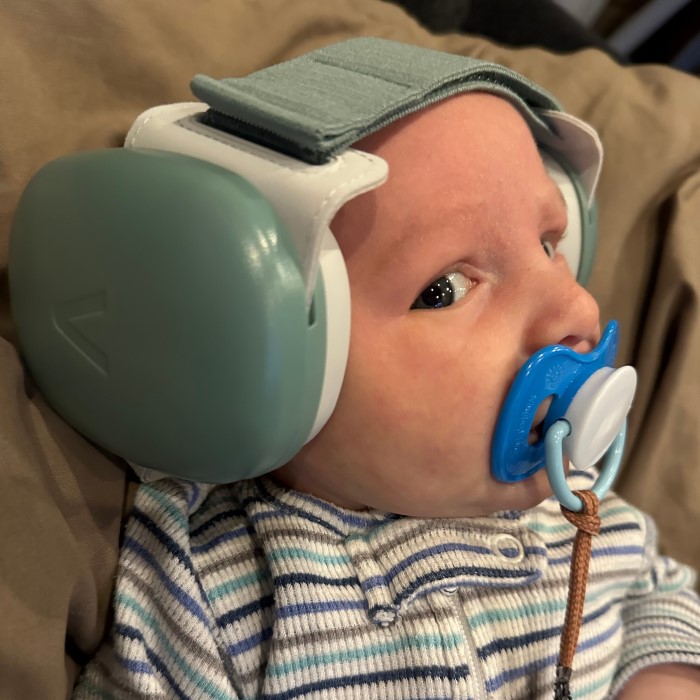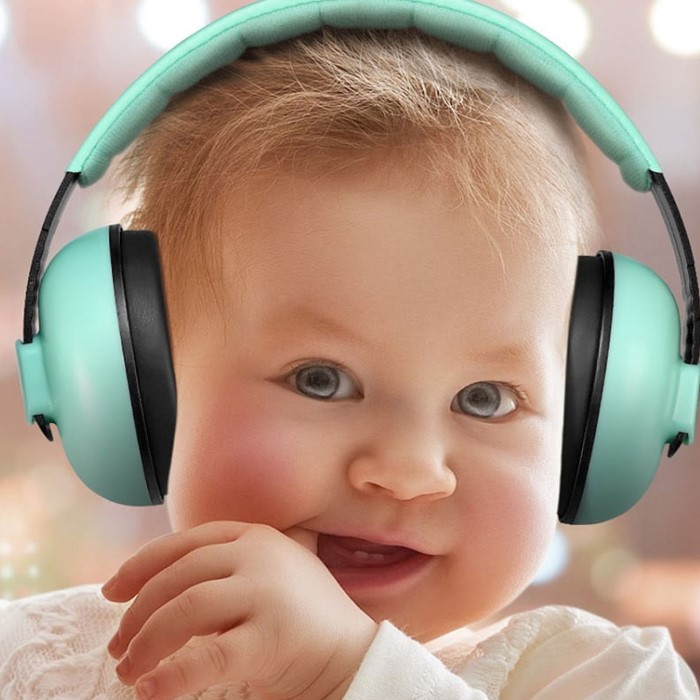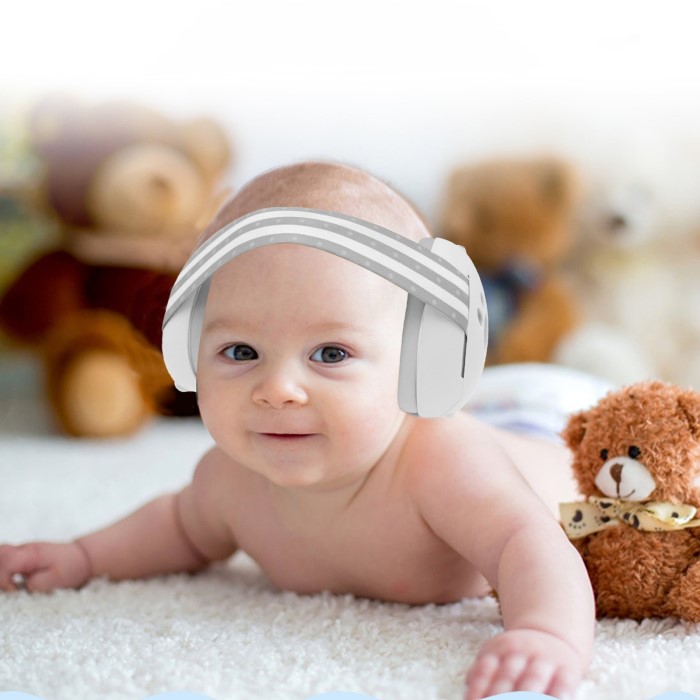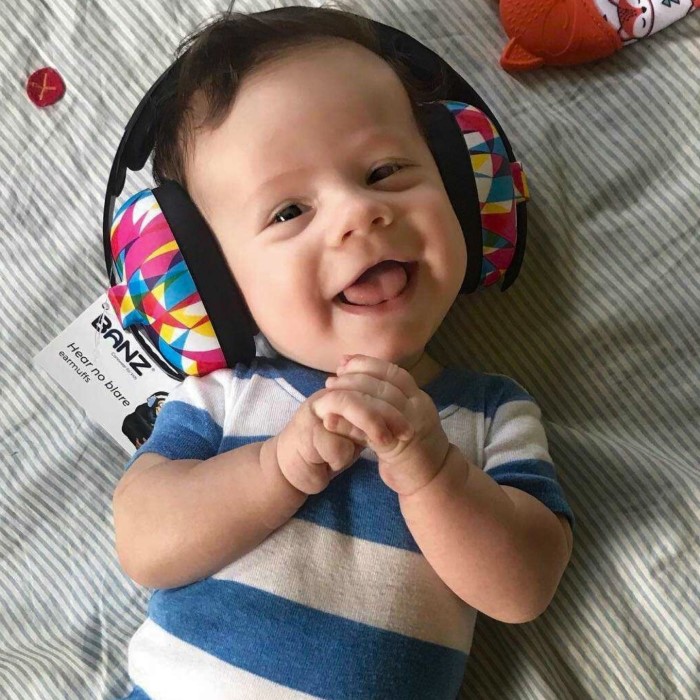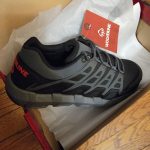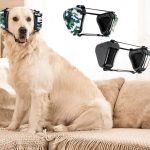Introduction
As our world becomes increasingly noisy, the safety of our children, especially infants, is paramount. Baby ear protection has emerged as a crucial aspect for modern parents who recognize the risks associated with exposure to loud sounds. Today’s environments—filled with bustling streets, crowded venues, and loud household appliances—can be overwhelming for a baby’s delicate auditory system. Loud environments can harm a baby’s hearing, leading to long-term issues.
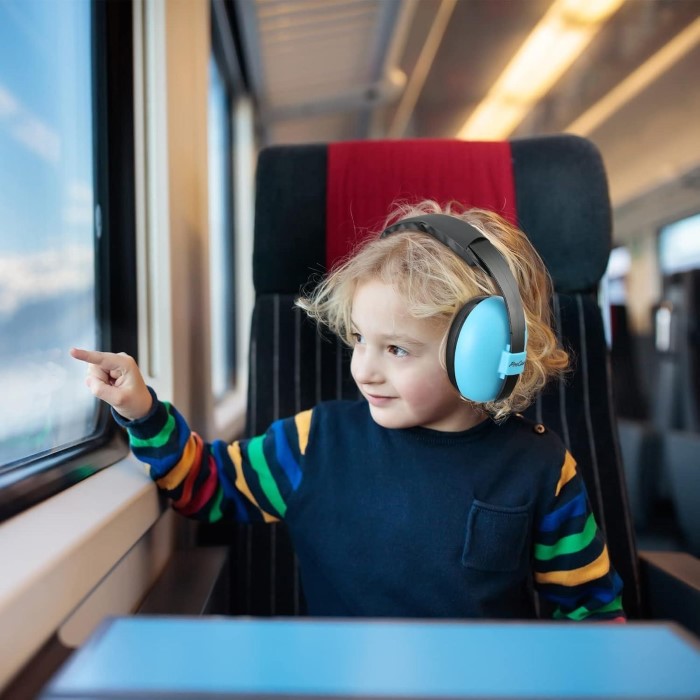
Research indicates that exposure to sounds over 85 decibels can be damaging to infants. Given that their hearing is more sensitive than that of adults, it’s essential to take proactive measures. In 2025, the rising sound levels call for increased awareness and action from parents. This article seeks to explore the necessity of baby ear protection, the types available, practical selections for protecting infants’ ears, and expert insights on safeguarding your child’s hearing health.
The Risks of Loud Environments for Babies
Understanding Noise-Induced Hearing Loss
Research shows that noise-induced hearing loss can begin at an incredibly young age. Infants’ ears are still developing, making them more susceptible to acoustic trauma. Common sources of harmful noise include loud concerts, sporting events, fireworks, and even busy traffic. The abrupt sounds and prolonged exposure can lead to both temporary and permanent hearing impairment.
Long-Term Effects of Hearing Damage
Consequences of Hearing Impairment
Hearing impairment can result in a range of severe ramifications that extend far beyond simple difficulty in hearing sounds. For children, one of the most significant consequences is the impact on speech development. When a child cannot hear clearly, it affects their ability to process sounds accurately, which is essential for learning to speak. This gap in hearing can lead to delayed speech and language skills, making effective communication more challenging later in life.
Furthermore, the inability to hear properly can hinder social interactions. Children who struggle with hearing loss may find it difficult to engage in conversations with peers or understand social cues during group activities. As they grow older, these challenges can translate into feelings of isolation or frustration, potentially leading to mental health issues such as anxiety and depression.
Impacts on Educational Performance
Hearing impairment can also interfere with educational performance as children advance through school. Hearing plays a critical role in the classroom; students must listen to lectures, participate in discussions, and collaborate with classmates. If a child cannot hear instructions or interactions clearly, it can lead to academic struggles, impacting their ability to keep pace with their peers.
As a result, students with undiagnosed hearing loss are more likely to experience lower grades and overall academic performance. They may require additional support or resources, such as hearing aids or specialized learning plans, to help level the playing field. Without timely intervention, these challenges can follow them into adulthood, affecting their career opportunities and quality of life.
Importance of Early Intervention
Parents may not always realize the immediate effects that loud noise exposure can have on their newborns. For example, sounds that adults find tolerable can be harmful to infants, as their ears are still developing. Early intervention is key. By recognizing the importance of hearing protection and seeking appropriate measures, parents can significantly reduce the risk of long-term hearing damage.
Protective measures may include using noise-canceling headphones, limiting exposure to loud environments, and promoting quiet play areas. These proactive steps can aid in safeguarding their child’s hearing, ensuring healthier auditory development.
Long-Term Health Implications
The long-term implications of untreated hearing damage extend to overall health. Studies have shown that individuals with hearing impairment may be at heightened risk for cognitive decline and dementia as they age. The inability to engage in conversations and social interactions can lead to social isolation, which is a significant risk factor for mental decline.
Moreover, the effects of untreated hearing loss can lead to increased healthcare costs in the long run due to the need for therapy, rehabilitation, and potential surgeries. Thus, preventing hearing impairment is not just beneficial for personal well-being but also for societal health and resource management.
Types of Baby Ear Protection Available
When it comes to baby ear protection, a variety of effective options exist. It’s essential for parents to choose products designed specifically for infants, as their needs differ significantly from adults.
- Ear Defenders
- Ear defenders or earmuffs fit snugly on a baby’s head, creating an effective sound barrier.
- Select ear defenders that are lightweight, with soft padding specifically designed for small heads to prevent discomfort and ensure a secure fit.
- Brands like Baby Banz and Earmuffs4Kids are known for their dedicated designs for infants.
- Noise-Cancelling Headphones
- Noise-cancelling headphones reduce ambient sound levels while allowing babies to enjoy music or sounds without risks.
- Brands such as Puro Sound Labs offer headphones specifically made for kids and babies, providing a combination of safety and usability.
- Earplugs
- Specialized earplugs for infants can provide added protection in less noisy environments.
- Ensure that soft materials are used to prevent discomfort. Consulting healthcare professionals before use is advisable to determine suitability.
- Acoustic Filters
- Products with acoustic filters can reduce sound levels without completely blocking noise.
- This is particularly useful in situations where some auditory awareness is beneficial, such as family gatherings or birthday parties.
Making Informed Choices for Your Baby’s Ear Protection
Choosing the Right Product
Selecting effective baby ear protection requires diligence. It’s essential to look for products that have undergone safety testing and meet quality standards. Reviews and recommendations from other parents can guide you to the best options available.
Fit and Comfort
A key aspect of the effectiveness of baby ear protection is ensuring proper fit. Products that do not fit securely may be uncomfortable for the infant or could fall off. Always ensure that the ear defenders or headphones are snug but not overly tight, allowing for comfort during prolonged wear.
Age Considerations
Choosing age-appropriate ear protection is vital. Not all products are suitable for every age group, so ensure that you select options that are designed for your baby’s specific age and head size. Many companies produce ear protection tailored to the age range and size of infants, toddlers, and older children.
Practical Tips on Protecting Your Baby’s Ears
To enhance ear protection, consider the following:
- Avoid Loud Environments
- Whenever possible, try to steer clear of loud situations, such as concerts, construction sites, or large public events. Keeping your baby away from noisy settings can significantly reduce the risk of hearing damage.
- Use Ear Protection
- When exposure to loud sounds is unavoidable, always equip your baby with appropriate ear protection. It’s vital to view ear defenders not only as tools but as necessary equipment when navigating through loud environments.
- Regular Hearing Checks
- Schedule regular hearing examinations for your baby to identify any potential issues early. Pediatricians typically recommend screenings at key developmental milestones to catch any early signs of hearing impairment.
- Educate Family and Friends
- Help family and friends understand the importance of minimizing noise when interacting with your baby. Encourage soft voices and limit the use of loud toys, which can all contribute positively to a calmer environment for your infant.
The Importance of Setting a Good Example
Creating a Positive Sound Environment
Limiting exposure to excessive noise in the home contributes positively to an infant’s auditory health. Parents should model appropriate behavior by maintaining a quieter environment. This involves reducing volume levels on televisions, smartphones, and other devices. Such practices support infants’ healthy hearing development.
Encouraging Gentle Interactions
Encouraging gentle interactions with the baby, such as soft singing or quiet play, creates a positive atmosphere. This forms a nurturing environment that fosters emotional connections while also emphasizing sound safety.
Parental Awareness
Keeping an awareness of the sounds around your baby allows you to respond quickly to any potential auditory threats. Proactively monitoring noise levels at family gatherings, outings, or social events ensures that you prioritize your child’s hearing protection.
Frequently Asked Questions
Do babies really need ear protection?
Yes, babies need ear protection, especially in loud environments. Their hearing is more sensitive, making them more susceptible to noise-induced hearing loss.
Can a 3-month-old wear noise-cancelling headphones?
Yes, a 3-month-old can wear noise-cancelling headphones designed specifically for infants. Ensure they fit properly and are lightweight to prevent discomfort.
At what age can babies wear ear defenders?
Babies can wear ear defenders as early as a few months old. Ensure you choose a product specifically designed for infants to ensure a secure fit.
How to protect infant ears?
Protect an infant’s ears by avoiding loud noises, using appropriate ear protection, and keeping them away from environments with elevated sound levels. Regular hearing exams are also beneficial for early detection of any hearing issues.
Conclusion: Prioritizing Hearing Protection for Your Baby
In summary, baby ear protection is not just a modern trend; it is an essential practice for parents in 2025. The growing prevalence of loud environments can pose significant risks to infants’ auditory health. By taking proactive steps to safeguard their hearing, parents can create a nurturing and safe atmosphere for their children.
Choosing the right ear protection—be it ear defenders, noise-cancelling headphones, or earplugs—can make a substantial difference in preserving your child’s ability to hear. Parents should view this investment not only as a product purchase but as a commitment to their child’s long-term health.
Make informed decisions about ear protection, understand the potential risks, and take action to protect your child’s hearing. With careful consideration and appropriate measures, parents can ensure a healthier future for their little ones while navigating the sound-filled world around them. Each step taken towards safeguarding your baby’s hearing today will contribute significantly to their overall well-being tomorrow.
